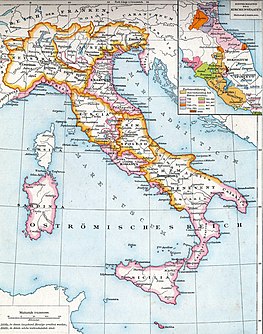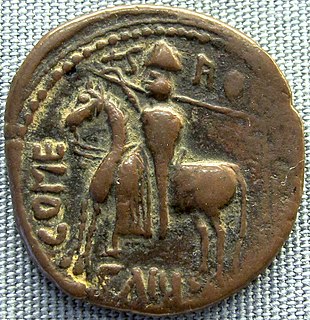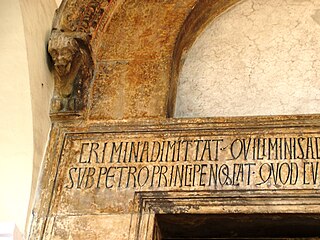Lando IV (Italian : Landone) was the Lombard prince of Capua from December 1091 until 19 June 1098, in opposition to Norman prince Richard II. [1] Lando belonged to the family of the counts of Teano. [1] According to the Catalogus Principum Capuae, Richard was "for years expelled by the Lombard counts and was made prince of Aversa [only], and afterwards he again held Capua", [2] without naming any of the Lombard counts. A charter from 27 January 1093 shows that for a time Richard II held Capua, but lost it again and was not finally reinstated until he successfully besieged it in 1098. [3]

Italian is a Romance language of the Indo-European language family. Italian, together with Sardinian, is by most measures the closest language to Vulgar Latin of the Romance languages. Italian is an official language in Italy, Switzerland, San Marino and Vatican City. It has an official minority status in western Istria. It formerly had official status in Albania, Malta, Monaco, Montenegro (Kotor) and Greece, and is generally understood in Corsica and Savoie. It also used to be an official language in the former Italian East Africa and Italian North Africa, where it plays a significant role in various sectors. Italian is also spoken by large expatriate communities in the Americas and Australia. In spite of not existing any Italian community in their respective national territories and of not being spoken at any level, Italian is included de jure, but not de facto, between the recognized minority languages of Bosnia-Herzegovina and Romania. Many speakers of Italian are native bilinguals of both standardized Italian and other regional languages.

The Lombards or Longobards were a Germanic people who ruled most of the Italian Peninsula from 568 to 774.

The Normans are an ethnic group that arose in Normandy, a northern region of France, from contact between indigenous Franks and Gallo-Romans, and Norse Viking settlers. The settlements followed a series of raids on the French coast from Denmark, Norway, and Iceland, and they gained political legitimacy when the Viking leader Rollo agreed to swear fealty to King Charles III of West Francia. The distinct cultural and ethnic identity of the Normans emerged initially in the first half of the 10th century, and it continued to evolve over the succeeding centuries.






